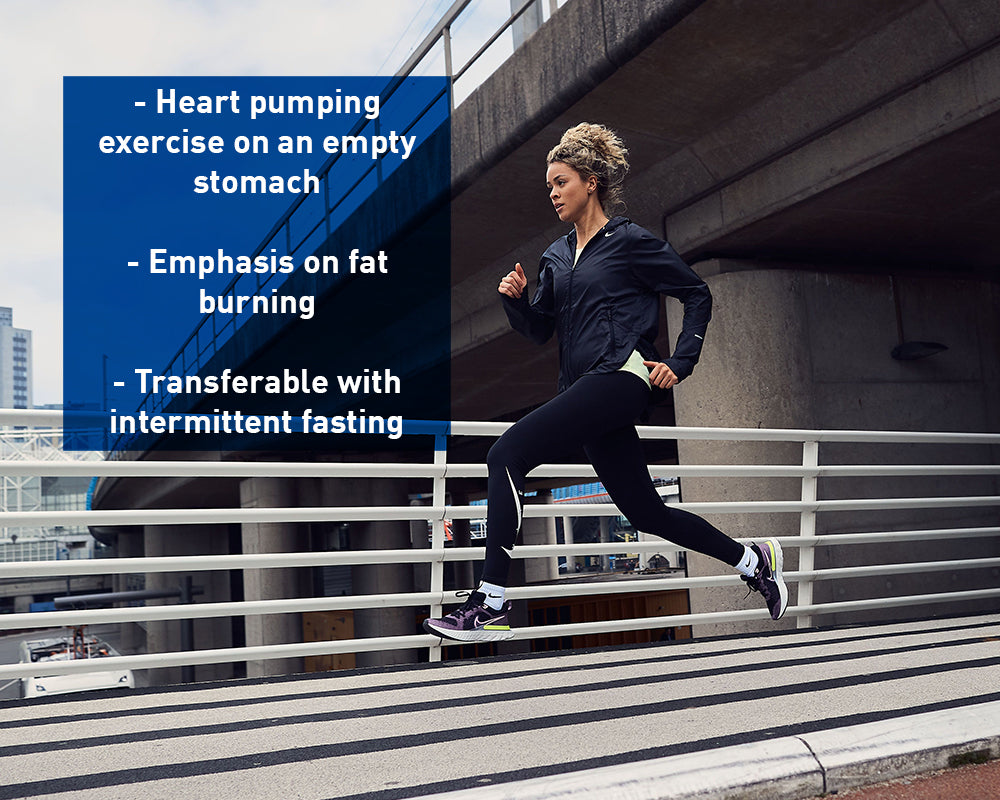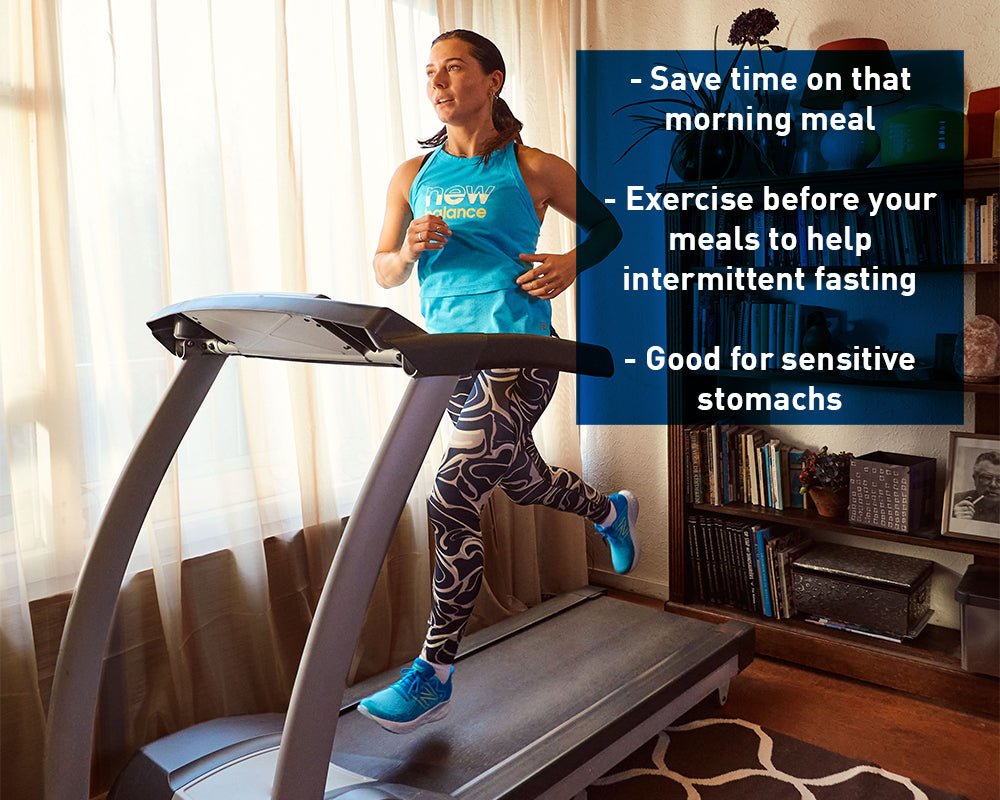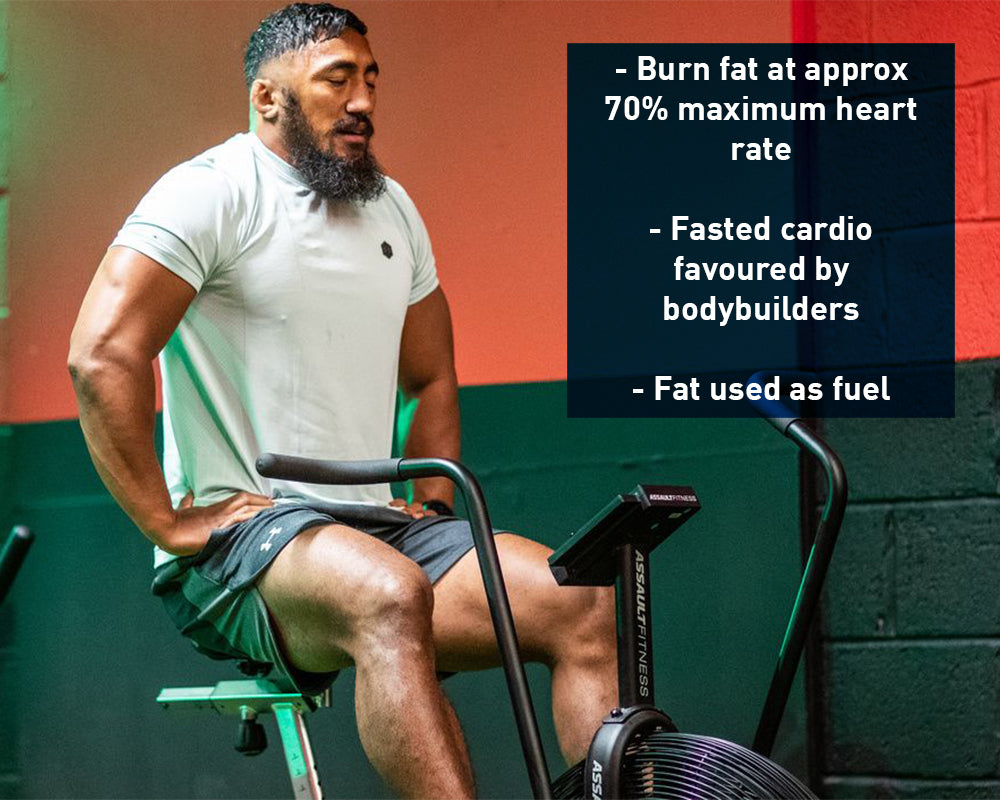
What is the Science behind Fasted Cardio?
WE’VE all heard of fasted cardio and the amazing fat-burning affect it is supposed to have. But do we understand fasted cardio science enough to help inspire the motivation to get yourself out of bed and straight into a workout first thing in the morning?
Fasted cardio works for some, and not for others, but after reading this blog we hope you’ll be able to make that decision for yourself.
If you’re new to running itself, why not check out our blog featuring Kilian Byrne of Irish Runner who writes about the health benefits of running.
What is fasted cardio?
It simply entails engaging in a heart-pumping exercise while fasting. (However, you can and should drink water beforehand!) In a nutshell, the purpose of this type of workout is to burn more fat.
This would generally happen first thing in the morning after sleeping overnight, but if you practice intermittent fasting, it can also happen later in the day.

Fasted cardio science is suggested as a strategy to accelerate fat reduction as compared to nonfasted cardio. And, while it sounds fantastic, its efficacy has yet to be established.
Let’s take a closer look.
What are the benefits to fasted cardio?
Fasted cardio science works on the theory that if you fast overnight and work out first thing in the morning, your body will be drained of glucose – its primary source of energy – and will instead turn to stored fat for fuel.
The evidence for this approach’s success is mixed.
Fasted exercise resulted in higher metabolic performance after the workout in multiple studies, according to one review. However, eating before a long aerobic workout improved performance, according to the same analysis – check it out HERE.
Fasted cardio provides some other possible benefits as you will see below, however more research is needed to make more clear claims on the benefits.
- If you’re short on time, fasted cardio eliminates the need to prepare, eat, and digest a meal
- Fasted cardio allows you to exercise before you eat for the day if you observe intermittent fasting
- Fasted cardio may be an excellent alternative if you prefer working out on an empty stomach, especially if you have a sensitive stomach or feel more energized without a meal before a workout.

Is Fasted Cardio safe?
Yes, for the most part.
If you’re in good health, incorporating short or moderate-length steady-state fasted exercise sessions into your training should be fine.
Fasted cardio, on the other hand, can be harmful if you’ll be exercising for a long time or undertaking a high-intensity workout because of the potential side effects of low blood sugar or dehydration, such as light-headedness, dizziness, shaking, or even passing out.
How does fasted cardio affect heart rate?
At rest, most people’s hearts beat between 60 and 100 times per minute.
During exercise, your heart rate rises. The more vigorously you exercise, the higher your heart rate will rise.
When you exercise in your fat-burning heart rate zone, your body uses fat stores instead of simple sugars and carbohydrates for energy. Fat loss occurs as a result of this.
A tempo run might be your ideal workout, read more about What is a Tempo Run here.
Your fat-burning heart rate is currently around 70% of your maximum heart rate.
The maximum number of times your heart should beat during activity is your maximal heart rate. Subtract your age from 220 to get your maximal heart rate.
A 35-year-old woman’s maximal heart rate, for example, is 220 minus 35, or 185 beats per minute. Her heart rate should be 70 percent of 185, or roughly 130 beats per minute, to enter the fat-burning zone.
One of the best ways of tracking your heartrate on the run is with a smartwatch or wrist monitor – check out our range HERE.

Bodybuilders have employed fasted activity to help them lose body fat before competitions for years. This is because fats are the principal fuel source for low-intensity steady-state (LISS) movement below about 70% of your maximal heart rate.
Working out in a fasting condition should focus on LISS, which is when the intensity is low enough that you are sweating but can still chat easily while exercising. Fat, which is digested with oxygen, is the principal source of fuel while you can talk while doing out.
Is it better for weight loss?
Burning more calories than you ingest is the most important part of weight loss.
While the evidence on whether fasting cardio aids fat loss is divided, with research showing mixed results
Fasted cardio, on the other hand, has been shown to improve fat-burning effects throughout a workout in several studies.
While fasting cardio burns more calories during the session than nonfasted cardio, the difference in overall daily calorie expenditure over a 24-hour period is negligible, according to research.
In general, increasing your daily mobility, whether fasted or not, is still the greatest approach for losing weight.
Walking, climbing the stairs, getting up from your desk on a regular basis, and playing with your kids will have a greater impact on weight loss than a 30-minute fasted cardio session.
Or why not take a run through nature, our blog on How to Start Trail Running will help you get started.
The Bottom Line
Cardio, whether fasting or not, is beneficial to your health. While diet is important for weight loss, cardio can also help you achieve your goal.
While data on its metabolic impact is still unclear, fasting cardio may suit your lifestyle or preferences better, so if you’re otherwise healthy, go ahead and try it.
